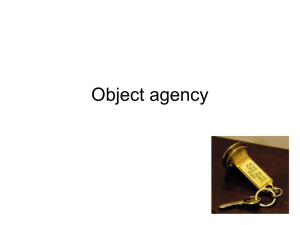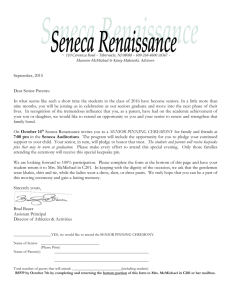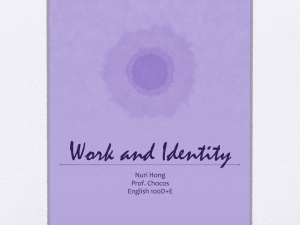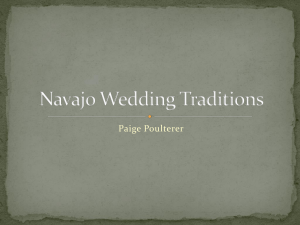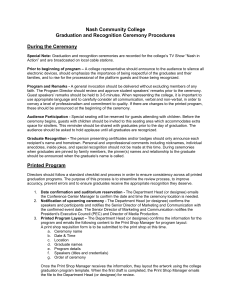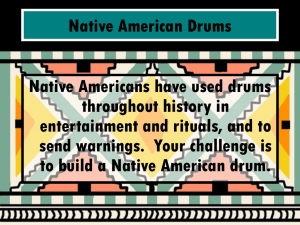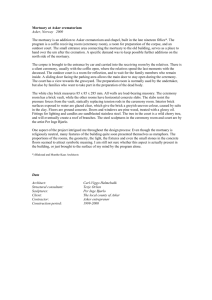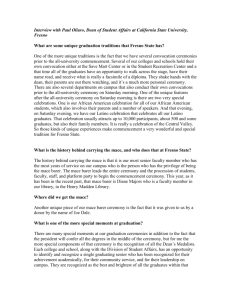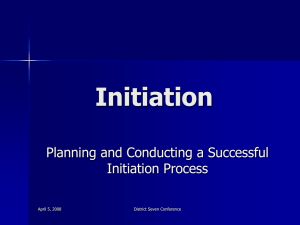African Music Powerpoint
advertisement
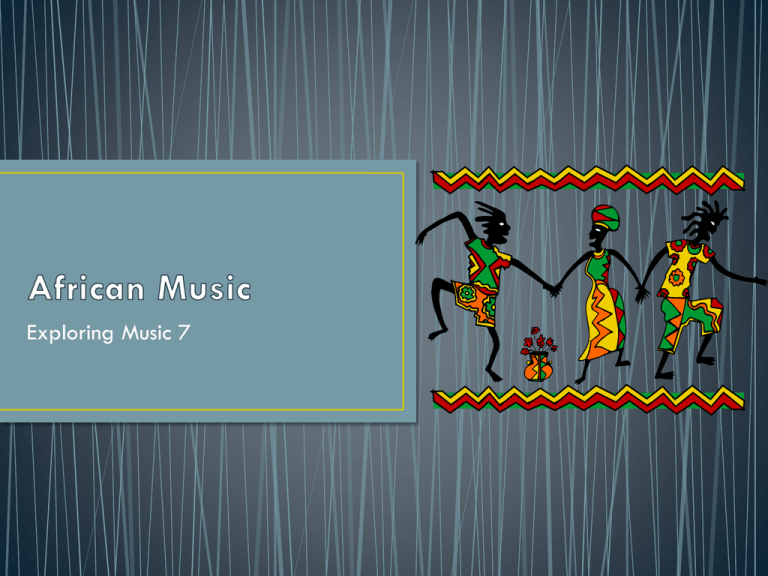
Exploring Music 7 • Families provide focus for community activities- singing, dancing, and music are important parts of family life • Rural Lifestyle- Up at dawn, and return home for an evening meal when it gets dark • After their evening meal, they sit and talk, and sometimes play instruments and sing • A lot of music and dancing at religious festivals, funerals, or harvest times where EVERYONE joins in • Good way for community members to meet, enjoy themselves, and celebrate • Villages are proud of their own versions of music- it is offensive to suggest it sounds like another village’s music! • Music reminds the community of where they came from (culture) • Main element of African music is RHYTHM! • Drums have to be tuned to particular pitches within ensemblesthis helps drummers imitate phrases that people might say (Tonal Music) • Drums are used as a form of communication between people some distance apart • Connection between words and music is used to remember and describe rhythm patterns played on drums • A djembe (pron.: JEM-be) is a rope-tuned skin-covered drum played with bare hands, originally from West Africa. • The djembe has a body (or shell) carved of hardwood and a drumhead made of rawhide, most commonly made from goatskin. • It is said that the name of the djembe comes from the saying "Anke djé, anke bé" which translates to "everyone gather together in peace" and defines the drum's purpose. •Native instrument from Senegal, Africa • 21 Strings •Made from a large squash (gourd) covered in cow skin • A strong and powerful style of singing • Originated from the Zulu people who are the largest ethnic group in South Africa • “A capella” singing literally means “without accompaniment” (instruments) • Usually all male singers • Stomps and tip-toe moves keep singers “in time” with each other • Strong harmony and blend (no voice sticks out) • Examples of this style of singing can be heard in the Disney movie “The Lion King” • Made popular in America in the 1980’s by Singer/songwriter: Paul Simon • Popular group: Ladysmith Black Mambazo Listen to the recording of “Ditax Kora” Describe the vocal style • • • • • Is the voice high or low? Does it use a wide range of pitches? Does it have a tight, nasal quality, or is it smooth and relaxed? Does it use vibrato? Does it slide from note to note (Portamento)? Describe the melodic style • It is a simple melody or does it have complicated decorations? • How do the words fit the tune? • What about the melodic contour? Do all the tunes ascend, descend, or do both? When you have finished, draw some general conclusions about the style of music • A traditional piece of community music from Ghana, Africa. • It is played by four bells of different shapes and sizes. • The music for the Hatsiatsia is played as part of a ceremony which involves dancing and singing. • The Hatsiatsia ceremony is often part of meetings that take place in the capitol city of Ghana called Accra on the first Sunday of each month. • Groups from different villages come to these meetings to dance, sing, swap gossip and news, celebrate their traditional culture and collect money which may be used for something their home village needs, like a new well. • It is performed by the people of the Ewe (Eh-vay) tribe. The Ewe are the main people from the south east of Ghana. • Everyone takes part in the ceremony. • It is a forgiveness ceremony. • Perhaps 100 people or more from a large circle, often around a tree that provides shade from the hot sun. • A bucket of water is blessed and placed just inside the circle. • A slow, shuffling dance step gradually takes everyone past the bucket and people dip their hands or a handkerchief into it, wiping their faces with water. • Sometimes someone will rush up to the bucket, cup their hands, scoop the water and throw it over as many people as possible. • This ceremony is a chance to forgive and forget all the arguments you have had with friends and family during the last month-they are washed away! • They are quite heavy and made of iron. • The GANKOGUI ( gang-cog-i) is a double bell. • The ATOKE (a-toe-kay) is a single bell. 1. 2. 3. 4. Where is the Hatsiatsia from? Where would we hear the music for Hatsiatsia? The Hatsiatsia ceremony is held where? Why is the bucket of water important at a Hatsiatsia ceremony? 5. What is a gankogui? 6. What is and atoke? 7. Draw a picture of the two bells. Performing the Hatsiatsia • The rhythms of Hatsiatsia music can be shown by using graphic scores. The following graph shows a steady pulse of 12. The first pattern repeats over and over again. Task 1: This Hatsiatsia has three parts. Perform each part individually and then put them together to produce a group/class performance. • After creating your own, practice and perform. • Here is what your project will be scored on: 1. 2. 3. 4. Beat/Pulse Musical Accuracy Use of Time Use of Instruments Refer to your handout Rubric for specifics

